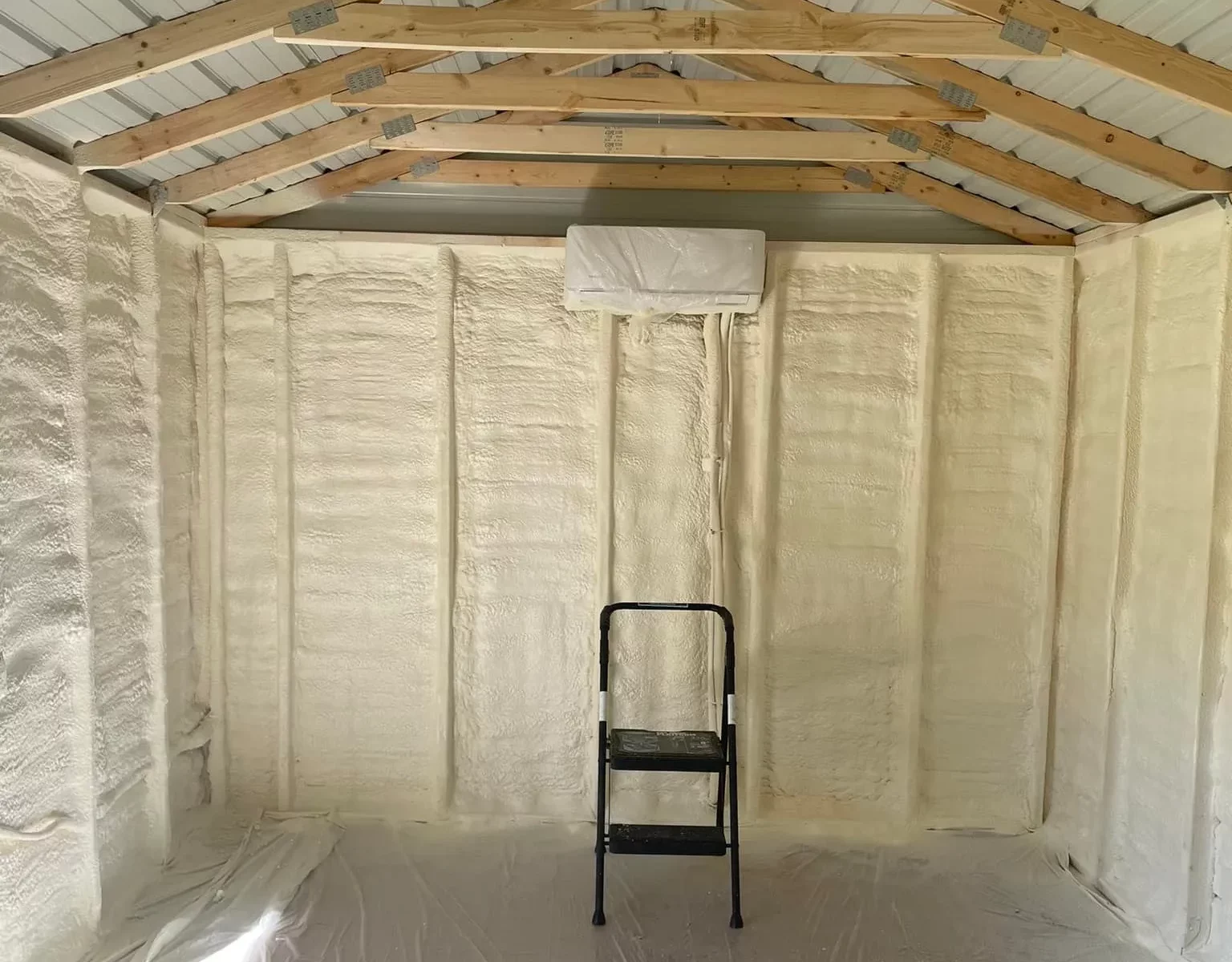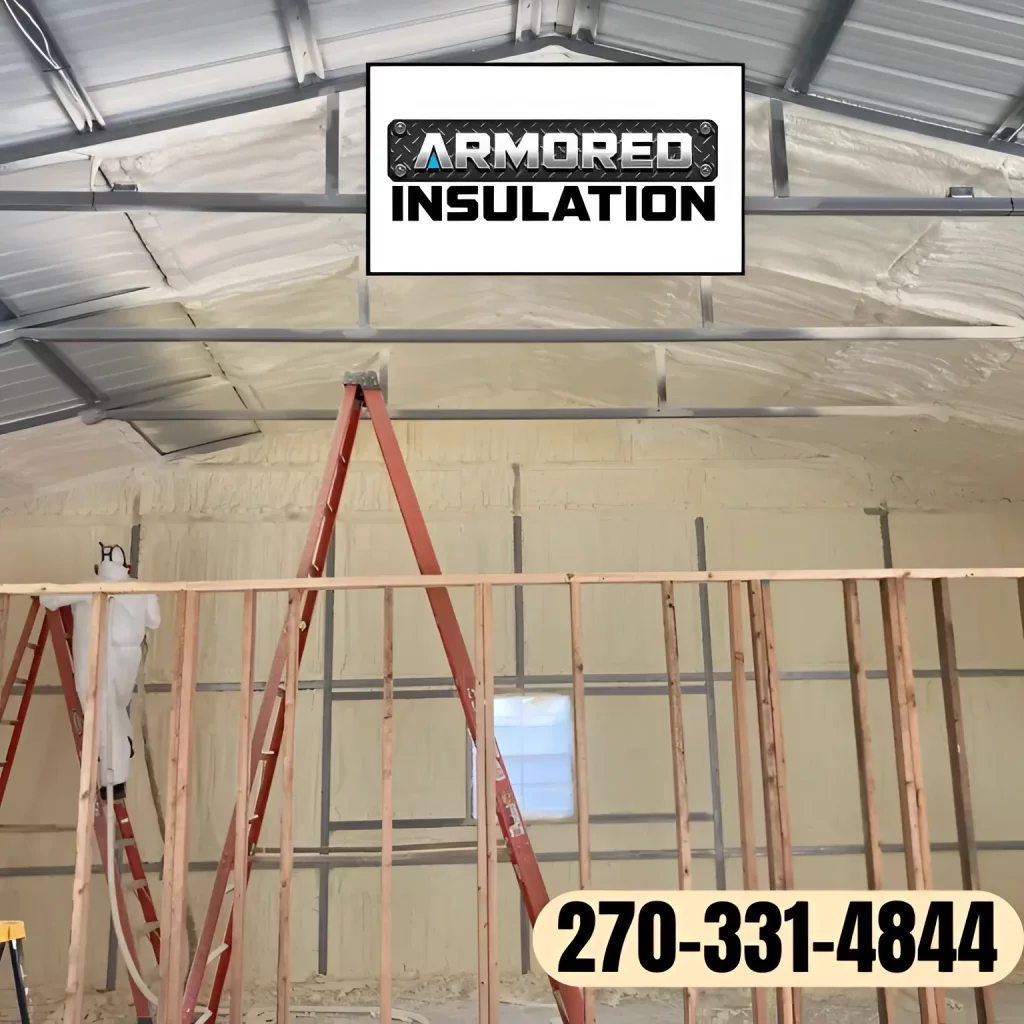
Cold air entering through walls in St. Louis homes isn’t just uncomfortable. It signals insulation failure. Spray foam insulation solves this by forming an airtight seal that stops air leakage and stabilizes interior temperatures. The closed-cell formulation also resists moisture, adds structural strength, and reduces airborne allergens.
This article outlines how spray foam performs against other insulation types in St. Louis conditions. Readers will find technical comparisons, data-based insights, and key considerations before choosing an insulation method. Armored Insulation’s experience with residential and commercial projects across the Midwest informs the guidance throughout.
St. Louis experiences wide seasonal swings. Winters often reach below freezing, while summers regularly cross 90°F. Many homes in the area were built before modern insulation standards were adopted. Spray foam offers a practical retrofit solution, especially for exterior walls where drafts occur most often.
Bonus Tip: For wall insulation upgrades, focus first on north-facing and wind-exposed sides. These show the most air infiltration on blower door tests.
| Insulation Type | Air Seal Capability | R-Value per Inch | Water Resistance | Sound Dampening | Mold Resistance | Install Method |
|---|---|---|---|---|---|---|
| Closed-Cell Spray Foam | Excellent | 6.5-7 | High | High | High | Spray Application |
| Open-Cell Spray Foam | Moderate | 3.5-4 | Low | Very High | Moderate | Spray Application |
| Fiberglass Batt | Low | 2.9-3.8 | Low | Low | Low | Panel Insertion |
| Blown-In Cellulose | Moderate | 3.2-3.8 | Low-Moderate | Moderate | Low-Moderate | Pneumatic Fill |
| Mineral Wool | Moderate | 3.7-4.3 | High | High | High | Panel or Loose-Fill |
Source: U.S. Department of Energy Building Technologies Office (2024)
| Property | Closed-Cell Foam | Open-Cell Foam |
|---|---|---|
| R-Value per Inch | 6.5-7.0 | 3.5-4.0 |
| Vapor Barrier | Yes | No |
| Structural Support | High | Low |
| Expansion Ratio | 30:1 | 100:1 |
| Air Infiltration Rate | < 0.2 ACH | ~0.6 ACH |
| Application Temperature | 40°F to 120°F | 40°F to 120°F |

Bonus Tip: Use an infrared thermal scan to locate wall voids and verify proper foam coverage post-installation.
Exterior walls, attics, rim joists, and crawl spaces are top priorities. These areas leak the most conditioned air.
Closed-cell foam typically maintains effectiveness for over 30 years without degradation.
Yes. Hybrid assemblies are common. For example, spray foam can be used in rim joists while using batts in wider cavities.
Energy Star estimates show up to 20% HVAC energy savings in homes sealed with spray foam insulation (Source: Energy Star, 2025).
Armored Insulation recommends the following wall-focused services:
Drafty walls are not just a comfort issue they compromise energy performance year-round. Armored Insulation provides expert diagnostics and installation of spray foam and alternative insulation options suited to the St. Louis climate. For a property-specific evaluation, contact [email protected] or call (270) 331-4844.
Once cured, spray foam emits no VOCs. Airtightness helps control dust and outdoor pollutants.
Spray foam requires no maintenance unless physically damaged. Annual inspection is recommended during home checkups.
Yes. Small areas can be refilled using portable kits or spot applications.
Not easily. Spray foam is semi-permanent. Removal involves mechanical scraping and can affect drywall.